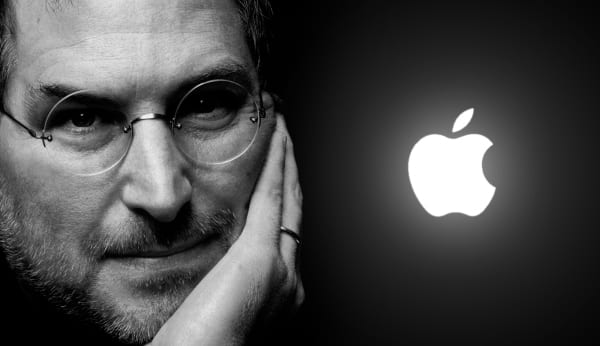 Sometimes reading a best-selling book is like going to see a movie all your friends rant that you MUST see. Formula for disappointment. How can anything live up to that kind of hype?
Sometimes reading a best-selling book is like going to see a movie all your friends rant that you MUST see. Formula for disappointment. How can anything live up to that kind of hype?
That’s how I felt a few weeks ago when I picked up Walter Isaacson’s 2011 biography of Steve Jobs, who died last October 5 at the age of 56. My first computer was an Apple; 25 years later I love my iPad almost more than my children. So I already respected Jobs. Plus Isaacson has been one of my favorite biographers since he wrote his American history epic, The Wise Men. But I felt the Jobs book could in no way live up to being Amazon’s best-selling book of the year.
I was prepared to be disappointed.
I wasn’t. I loved getting to know Steve Jobs, in all his nutty brilliance, in the intimate way you can only through plowing through a deeply-sourced 600 page biography.
However, I was surprised by what most inspired me about Steve Jobs.
It wasn’t his stunning achievements bringing idiot-friendly innovations such as the iMac, the iPod, the iPhone and the iPad to millions of consumers at (fairly) affordable prices.
It wasn’t his clear adoration for his adopted family, his biological sister Mona Simpson, or his lovely wife and three children.
It was not his $7 billion net worth.
It wasn’t his brave battle against pancreatic cancer.
It wasn’t his conviction that LSD helped him become more creative, his belief in wacky diets (he ate a lot of organic carrots), or his love of conducting meetings during endless walks around the Palo Alto hills.
I fell for Steve Jobs because, I learned, one of the modern world’s most brilliant and financially successful inventors, marketers and businessmen essentially cried his way through life. He cried in business meetings. He cried in Apple’s hallways. He cried during client and shareholder presentations. He cried at board meetings. He cried in front of Bill Gates.
Now I can identify with that.
I’ve always been a big crybaby. Naturally, as a baby I cried. When I was in elementary school, and clearly not outgrowing the habit, my crying ways were still borderline acceptable. I cried when I got knocked out in kickball. I cried when my second grade teacher told me I picked my nose too much. I cried when the principal asked me not to kiss the boys at recess. I cried when I failed my first chemistry test – actually I cried for the full 45 minutes it took to fail that test.
Crying, as a lifestyle, probably would have worked out for me if I wanted to be a grief counselor or mascara test dummy. But I was determined to be a successful, mainstream, tough-as-nails businesswoman. Along the way to adulthood – Harvard, Wharton b-school, a career in marketing at Johnson & Johnson and the Washington Post – crying in public became less of an asset for me. Especially as a woman. Especially as a businesswoman. Crying made me feel embarrassed, weak, emotional, and despicably female.
It had to stop.
Unfortunately none of the fine educational institutions I attended offered classes in How Not to Cry. So, on my own, I invented a series of tricks and distractions that helped me avoid crying – and, even more challenging, I learned how to stop myself once I felt the tears coming. The most efficacious technique was to silently berate myself for being stupid and irrepressible. Over time, I studied far harder for How Not to Cry than I ever studied for the SATs, the GMATs, job interviews or big customer pitches.
My methods were brutal but they were effective. I learned to avoid getting upset, at least at work. (Early on, I decided that crying at home was my birthright; you have to pick your battles.) I only lost my cool twice at work, both times because editors at the Post whom I adored thwarted my efforts to sell hundreds of thousands of advertising dollars into the Washington Post Sunday Magazine. A strange thing to cry over, I know; but I really cared about that publication.
So you can imagine how deeply gratified I was to discover that STEVE JOBS, of all people, cried at work on an almost daily basis. He mostly cried out of frustration and rage that people didn’t agree with his vision. He was bratty in other ways, too – he mocked people regularly, told brilliant employees their designs sucked, and appropriated other genuises’ ideas as his own. In between doing all those things, he cried.
Reading Isaacson’s many anecdotes of how/where/why Jobs cried, it became clear to me that Steve Jobs cried because he trusted his own intuition and creativity. He cried because he believed passionately in his own ideas. His remarkable vision of how products should perform, look and feel made him cry. He cried because he believed in himself and what he could accomplish in this lifetime.
Wow. That is a whole new spin on why humans cry. Maybe my crybaby tendencies had nothing to do with being female, or emotional, or sensitive. Or maybe all those attributes, including a proclivity for tears, are actually assets, too often overlooked or ridiculed by a world blind to diversity, creativity, passion and brilliance.
Thank you, Steve Jobs. Wherever you are, I hope you are still crying.





